How to... Maintain Mood Levels
Nov 10, 2021
Happy, regulated mood is where life can feel most calm, easy and enjoyable. Yet many often feel in the grip of a rollercoaster rise of emotions, inner criticism, worry and self-doubt. These can include periods of low mood that can make existing daily feel extremely difficult and even downright exhausting.
Whether this falls into a label of ‘depression’ or not, from a holistic point of view, there are some key potential underlying causes that may offer potential change in how we view ourselves and the world. Attending to the self-care we need to be able to cope and find a more positive outlook can in turn allow us to participate in activities that we know elevate our mood. Humans have a naturally raise in mood and motivation via the reward neurotransmitter dopamine when we do anything that propagates survival of the species; eat, drink and exercise, but as pack animals, also through group bonding and cooperation, so group activities, sports, talking, eating together and touch all help to keep us emotionally afloat.
Ironically, when we feel low, engaging in the very things that elevate mood can become difficult and we can get caught in a vicious, downward spiral. Low mood and the constant mental ruminations (inner voices) that can come along for the ride, is very tiring – our big brains use up 20-25% of our total energy expenditure when we are calm, but when we move into stress and protective hypervigilance this can move up to 70-75%. This means that even when we may seem shut-down from the outside, if our minds are churning on the inside, we are using up energy and can easily feel fatigued.
Low mood can also come from trauma; whether an event (shock trauma) or childhood events or lack of care (developmental trauma), it may have become our habit to tune out from these deep feelings. This ‘freeze’ or dissociation can leave us with a ‘not really here’, ‘out of body’, disconnected state that may seem to be in stasis, but can also take up lots of energy – holding ourselves rigidly away from engaging with the world and from not feeling. Trauma is our unconscious, primal brain creating a full physiological mind-body response as if the trauma were here now. Many mental health and mood issues have their roots here and exploring ways to cultivate safety in the present and conscious processing of what is happening can help these self-protection strategies when they are no longer appropriate to the current situation.
The following are worth exploring to find what feels right for you and they can be helpful alongside psychotherapy where you may feel the need to understand ‘your story’, but also away from as they don’t need the rational mind to get involved:
-
Cranio-sacral Therapy – helps to regulate communication between body and brain and create safety that can support good mood
-
Somatic Experiencing – a therapy from the work of the trauma expert Peter Levine that explores and help to process how our body holds onto previous events
-
TRE (Tension & Trauma Releasing Exercises) – a simple set of exercises to let the body tremor and shake to reprogramme patterns held in the ‘old brain’
-
EMDR (Eye Movement Desensitisation and Reprocessing) – a process often used alongside talking therapies to change how our brain responds to input, often lead by eye movements
-
Hypnotherapy – a rewiring of conditioned responses from the brain to more appropriate ones for the actual situation; done in a state of altered consciousness similar to that where we daydream
-
Family Constellations – exploration in a group setting of the unconscious behaviour patterns and habits that happen down the generations in families.
The nutritional connection to mood
As our brains can demand around anywhere from one-fifth to two-thirds of the body’s total energy output, we can see they need a constant supply of fuel. When this is interrupted or not consistent, our mood can suffer and we can also crave quick-fix supplies – the reason why mental health issues often correlate with sugar cravings and addictions.
Our whole body – including our brain - is designed to receive a slow release of carbohydrates from vegetables, fruit, nuts, seeds, grains, beans or dairy in the form provided by nature. This helps promote a more stable delivery of glucose, the type of sugar carbohydrates break down into and we use for energy (production), to the bloodstream and therefore the brain. Lots of sugar or even a high starchy-carb meal (as in potatoes, grains and beans), can cause a surge of glucose that results in a quick drop after as the body over-compensates to move potentially damaging sugars out of the bloodstream.
Sudden low blood glucose or reactive hypoglycaemia can result in anxiety, especially for individuals prone to it. This is, in part, due to increased adrenaline that occurs when blood sugar drops quickly as the system believes it could starve and must get food for survival. This is where cravings begin – at this point, we don’t care what it is we eat, the feelings that result – irritability, dizziness, anxiety, fatigue, headaches – prompt a survival mechanism to simply “fuel up right now!” and we can turn to these kind of foods that quickly (but not subtly) ramp up blood sugar levels again:
-
High-sugar foods include processed cereals, refined “white” grains, soft drinks, fruit juices, added sugars, confectionary, sweets, chocolate, fruit ”flavored” products, low-fat desserts including frozen yoghurt, alcohol, custard, cheap dark chocolate, any milk chocolate, ice-cream, cakes, biscuits, and desserts.
-
Stimulants include alcohol, caffeine, nicotine, and recreational drugs. If addictive relationships to any of these are present, addressing sugar and stress issues first is the best preparation for full avoidance. They can be reduced as the individual feels comfortable.
Balancing blood sugar – stable brain energy
A blood sugar balancing diet has an emphasis on plenty of vegetables, fruit, nuts, quality protein sources, healthy fats and grains as tolerated by the individual. A recent study in the British Journal of Psychiatry (Akbaraly et al, 2009) showed that patients who consume a diet rich in dairy products, fried, refined and sugary foods are at increased risk of developing depression, whereas those whose diet is rich in fish, fruit, and vegetables (such as a traditional Mediterranean Diet) are at lower risk of developing depression. Although other research has looked at the relationship between single nutrients and depression, this is the first study to investigate the effect of dietary patterns on depression.
However, depression is one of the known side-effects of sugar withdrawal alongside headaches, irritability, anger, energy slumps and fatigue, so any change from a diet high in refined carbohydrates should be gradual, staged and if extreme, preferable under the guidance of a Nutritional Therapist.
Key Mood Foods:
-
Green leafy vegetables – plant foods like broccoli, cabbage, spinach, rocket and watercress contain minerals we need for mood regulation and fibre for blood sugar balance; we evolved eating plants like this so find them soothing to receive
-
Nuts and seeds – provide omega oils, B vitamins, magnesium and zinc to regulate mood and energy; great snacks for when we crave sugar to falsely support these
-
Sweet potatoes – useful alternatives to regular potatoes and turning to other starches like pasta, rice and crisps to buoy up mood; sweet potatoes are less starchy so provide energy without the insulin surge that can create blood sugar lows after.
-
Healthy protein sources for brain soothing – provide the amino acid protein building blocks for creating neurotransmitters and maintaining stable blood sugar levels; yogurt (full-fat), quality meat (free-range, organic), slow-cooked beans and pulses, nuts, seeds, sustainably caught wild fish.
Mindful Salutation for Mood Support
This sequence creates the mind-body fluidity that can often feel lost when we become locked in to the effects of low mood states. When we feel deflated, we can also feel demotivated, so the following mindful body-connecting and loosening practice can create expansion without demanding too much of us.
1. Start on all fours, with folded blanket under your knees if you need. Feel the ground beneath your hands, knees and tops of feet, dropping into your breath and wriggle the hips and shoulders to loosen these joints. Notice your belly here, feeling the area between the hips bones and lower ribs – this is where the movement will be initiated from.
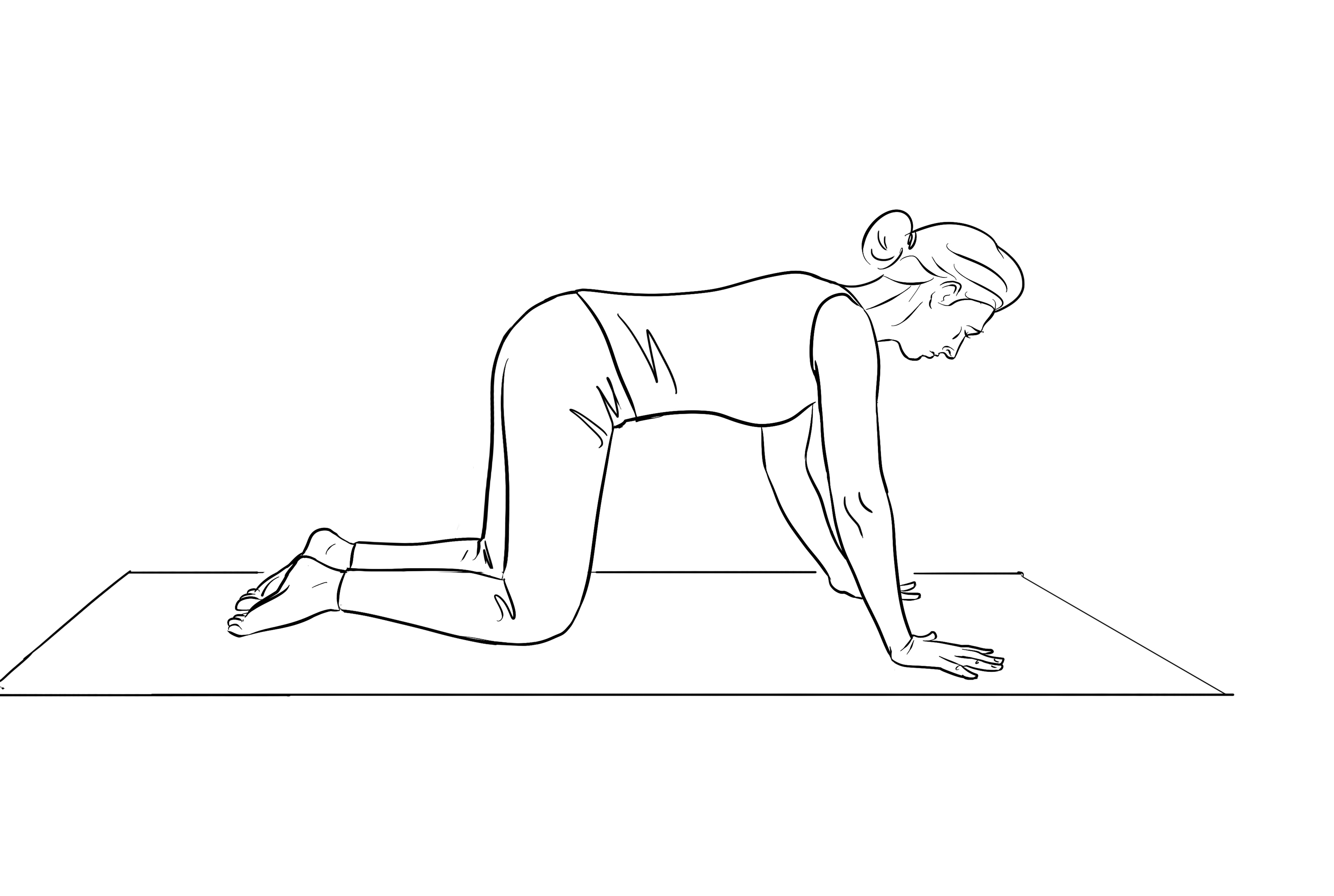
2. Draw that belly area into the spine, to drop back towards the heels, arching the back to drop the head and draw the weight off the hands as soon as you can.
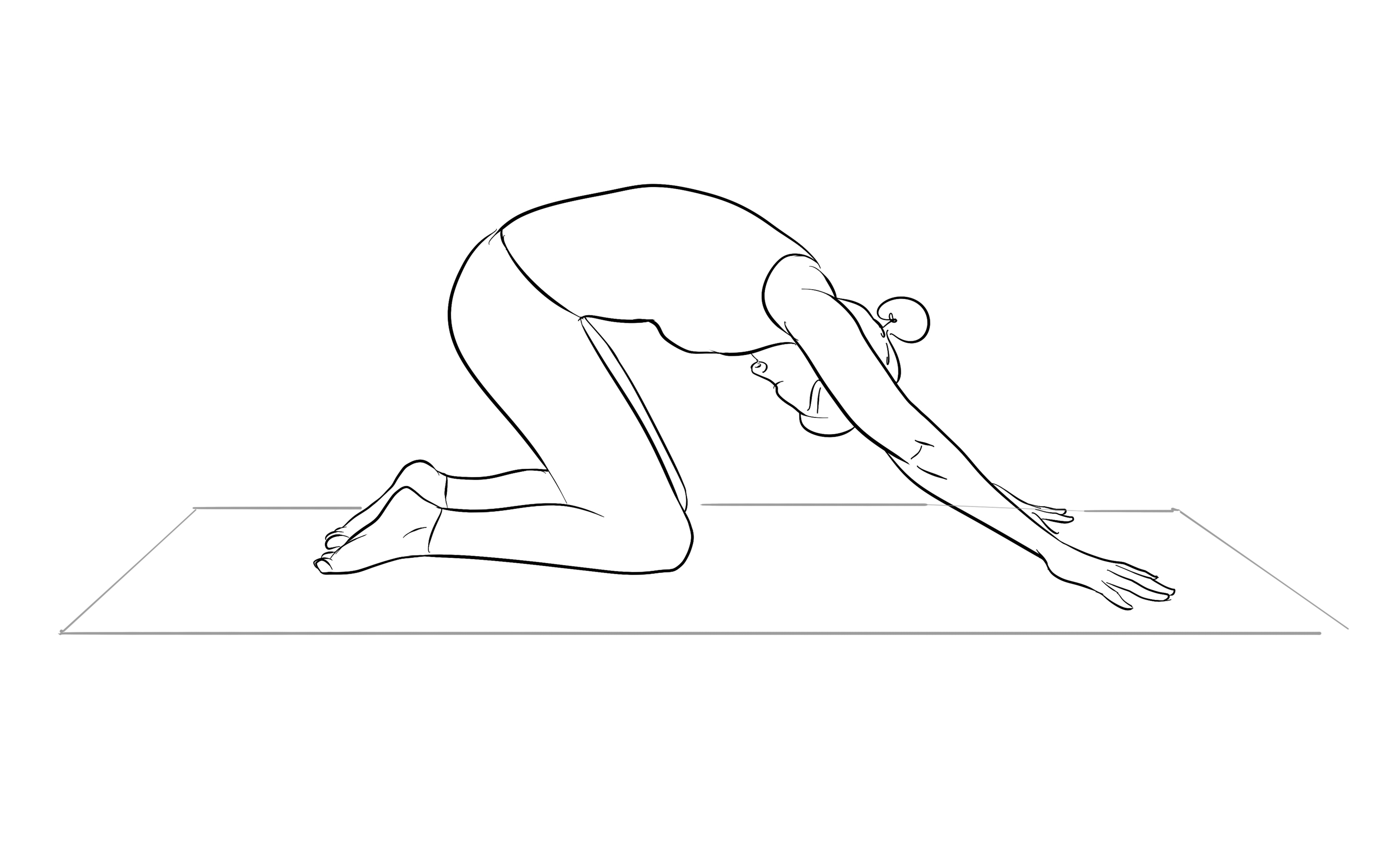
3. Continue drawing the belly back and up to raise up onto your knees; up through the inner legs, spine and neck, taking the arms out and up.
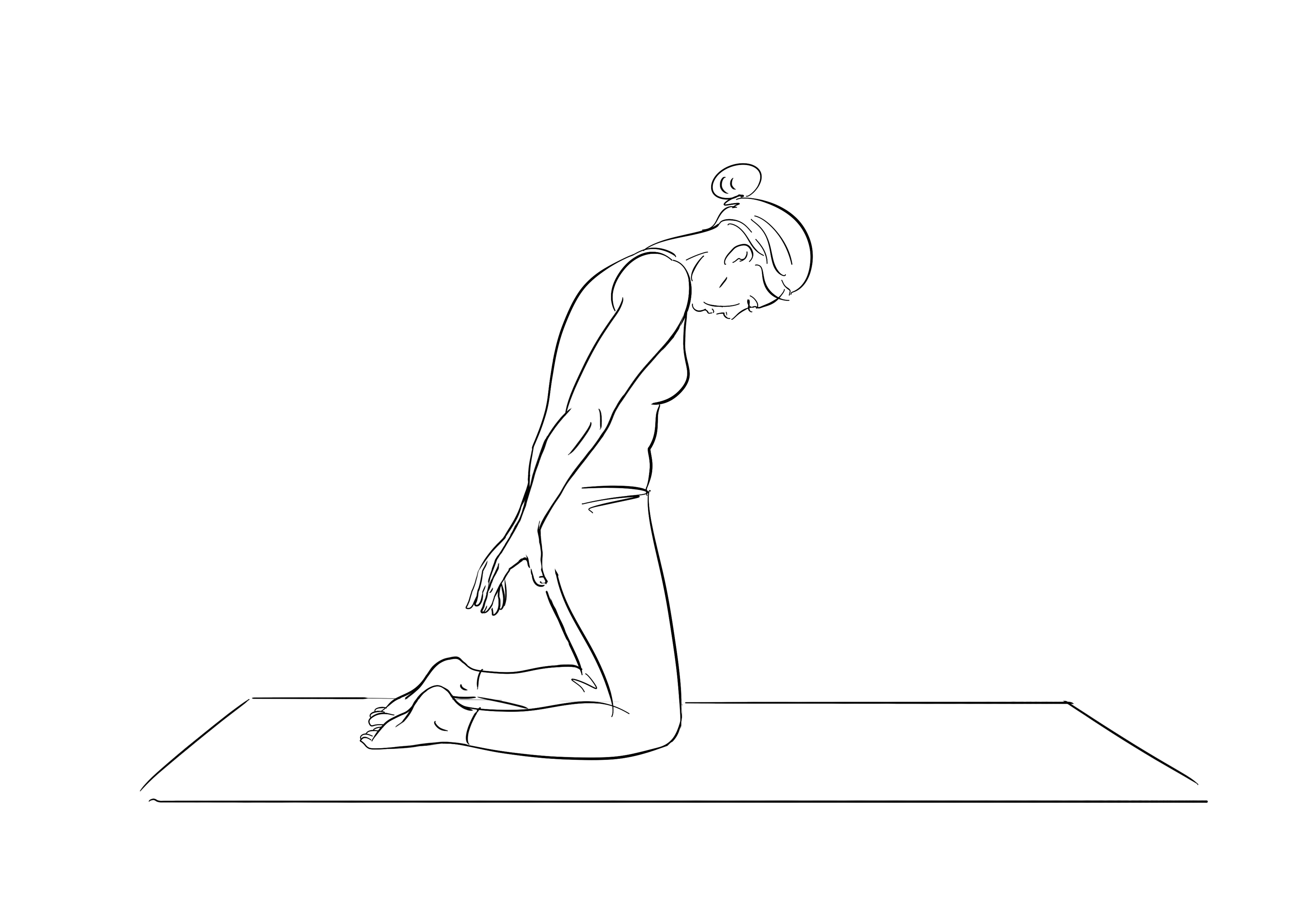
4. Continue lifting to open the whole of the front body, looking up to the hands only if your neck if comfortable.
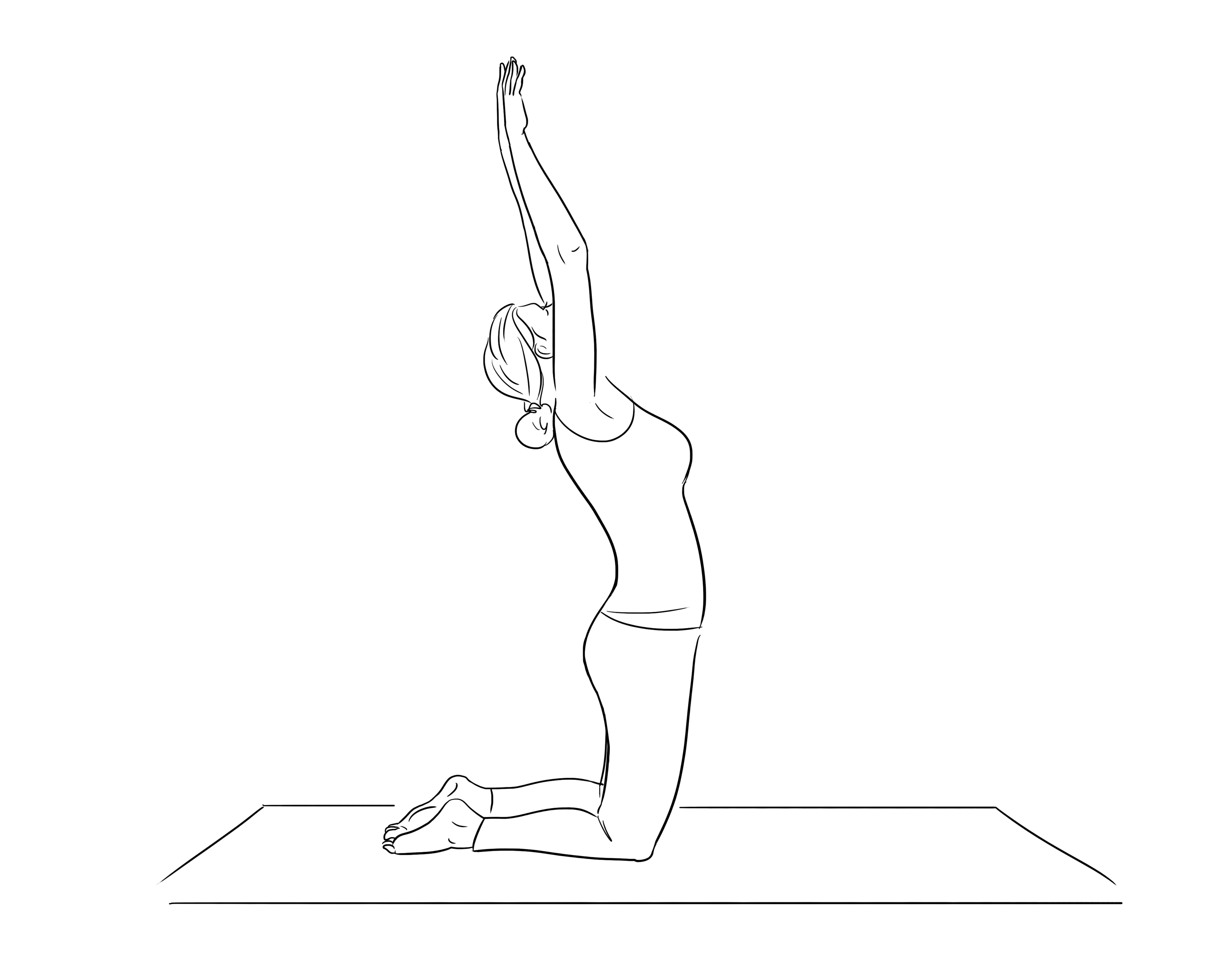
5. Bend at the hips and drop the bottom back, spine positioned as when you were upright and arms back out and down. Engage the ‘square’ of the belly between hip bones and lower ribs to support the lower back and bring the hands back down onto all fours, with control and ease.
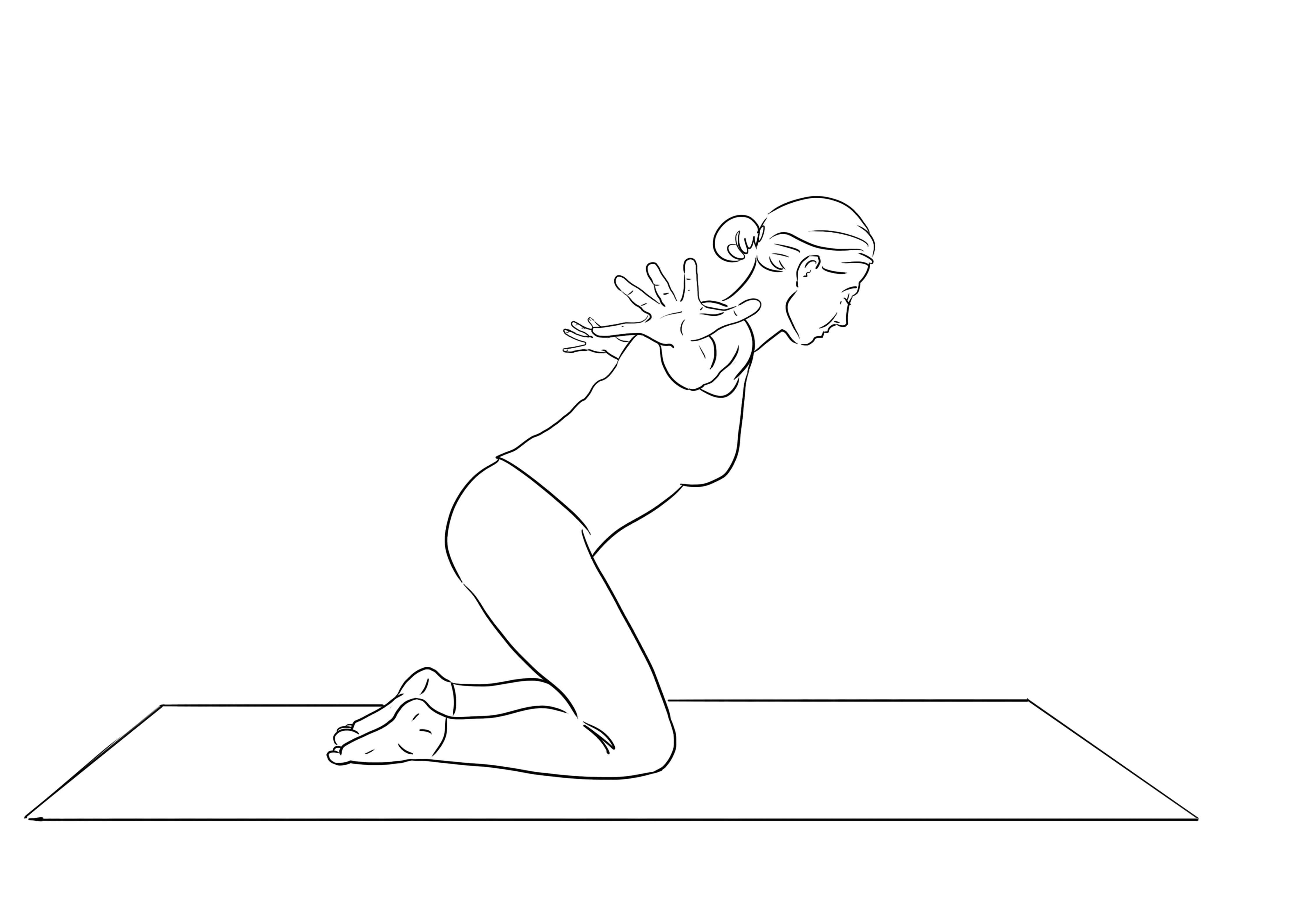
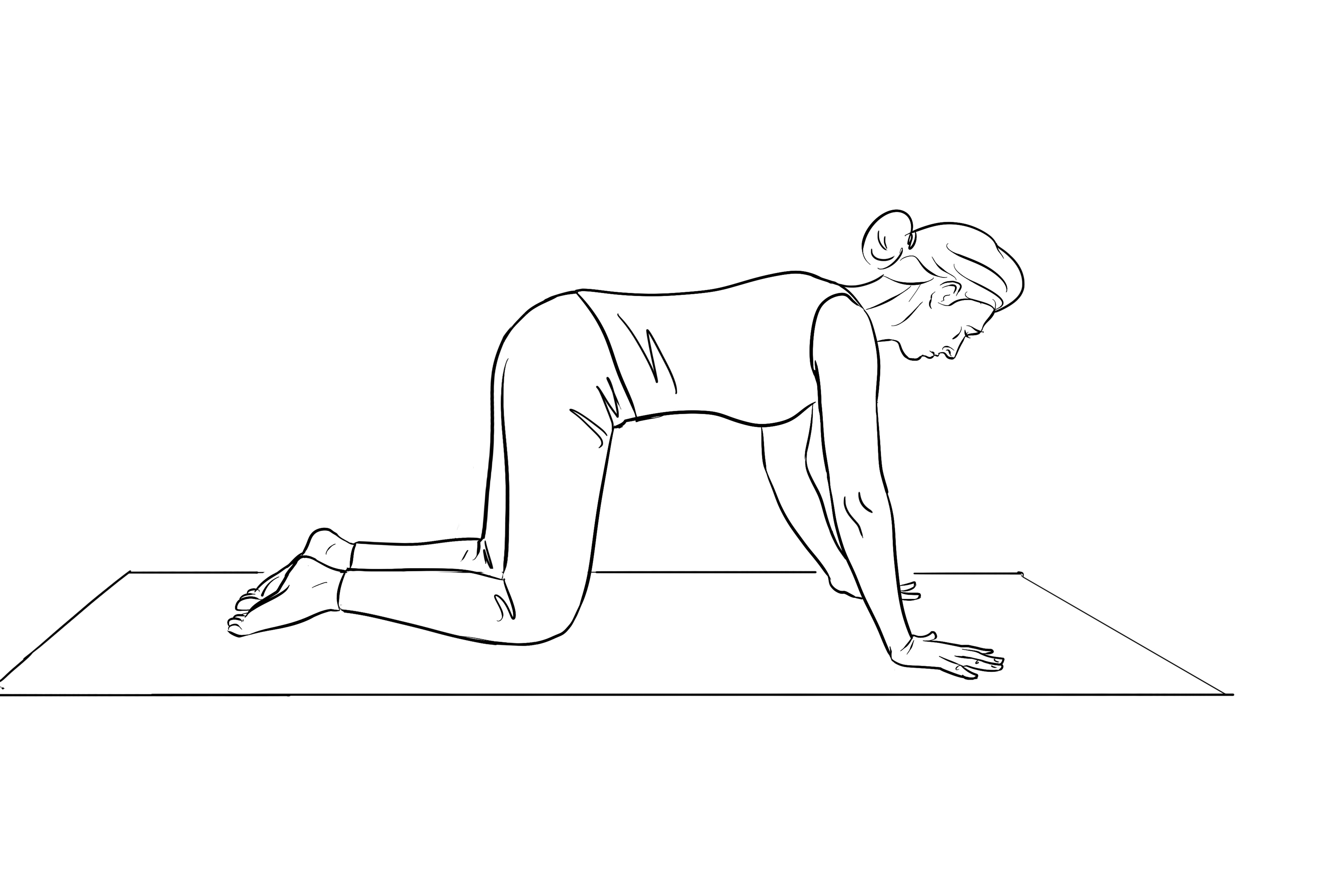
6. Continue the sequence at the pace that feels right, staying to hold and breathe fully in any positions that needs exploration or opening there.
This sequence can also be done as a Cyclic Meditation, where alternating stimulation and relaxation is used to go into deep silence. You can do several rounds of the salutation and then rest in child pose (Balasana) to experience restoration and mindful attention on whatever is arising for you.
Gratitude Practice:
To help us appreciate life and help release our minds from grasping for something ‘better’ than what we believe we already have, a gratitude practice helps bring us to a place of compassion with each breath. Simply think of or write down three things for which you feel grateful each night before you go to bed to sleep and process the day’s thoughts with a positive spin. Any time of day is good if this doesn’t sleep but try to do it even if you just don’t feel that thankful – the signals still get through to your brain! Gratitude can often come less easily than grumbling, but continual practice has us noticing the little things in life that make us happy and release us all that energy used up hankering after ‘grass is greener’ fantasies.
Supplements:
Visit my Health Shop for supplements that I have selected specifically for Mood Support.
Have you heard of my free Calm Package? As a member you have access to many perks including a free 40 minute Somatic Yoga video (on grounding, moving and meditation), and much more... click here to find out more.




